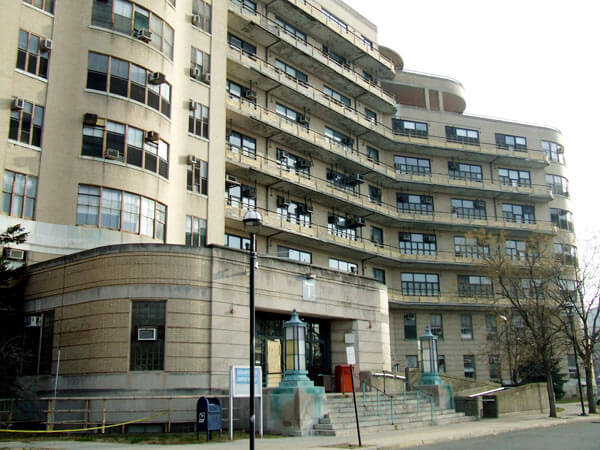By Rich Bockmann
About a year after it floated a plan to convert an underused building on its Jamaica Hills campus into supportive housing, Queens Hospital Center is now considering tearing down the T Building, though a group of preservationists wants to see the historic structure stay.
The hospital’s plan last year to lease the 76-year-old former tuberculosis ward was met with sharp rebuke from neighborhood residents and community leaders, who feared the building’s tenants — people with low incomes, chronic conditions, mental disabilities and those living with HIV/AIDS — would be too close for comfort to nearby schools.
Queens Hospital eventually dropped the plan and now is looking at a number of options for the building — which is currently being used as a back office — including demolition.
The Queens Preservation Council, however, is up in arms over the prospect of losing the building designed by John Russell Pope, architect of Washington, D.C.’s Jefferson Memorial and the National Gallery of Art.
“Not only is this handsome building an outstanding work by a master architect, but its history embodies our city’s and our country’s response to urgent public health care needs during the Great Depression,” preservation chairman Mitchell Grubler wrote.
When it opened in 1937, the Triboro Hospital for Tuberculosis, as it was known then, was a leader in the fight against the “white plague,” which had infected an estimated 4,000 people and claimed the lives of nearly 550 people in Queens the year before.
The 10-story, Art Moderne-style building faces south with large windows and open balconies designed to afford patients the maximum amount of fresh air and sunlight, Grubler said.
When the state razed four other buildings that were considered eligible for the National Register of Historic Places in 1998, it included a binding covenant to preserve the T Building, and Grubler said the preservation council is now mounting a campaign to have it protected.
Richard Hellenbrecht, president of the Queens Civic Congress, said he has heard both sides of the argument and said each has a valid point.
“It’s impressive architecturally. It’s got a lot of detail that would be nice to preserve, but it’s got structural problems that would be expensive if they had to be repaired,” he said. “I’m on the fence myself. I don’t know if it’s best to demolish it or to save it.”
Reach reporter Rich Bockmann by e-mail at rbockmann@cnglocal.com or by phone at 718-260-4574.































